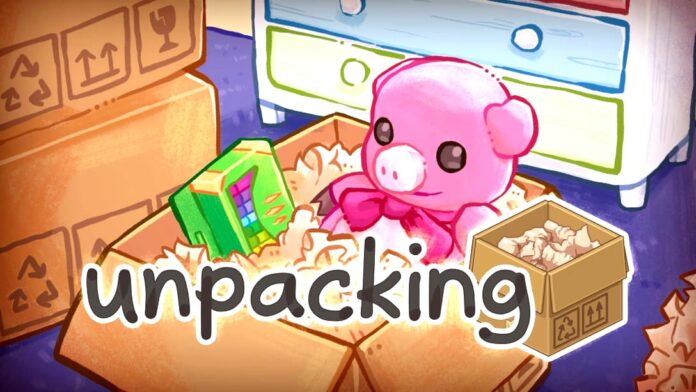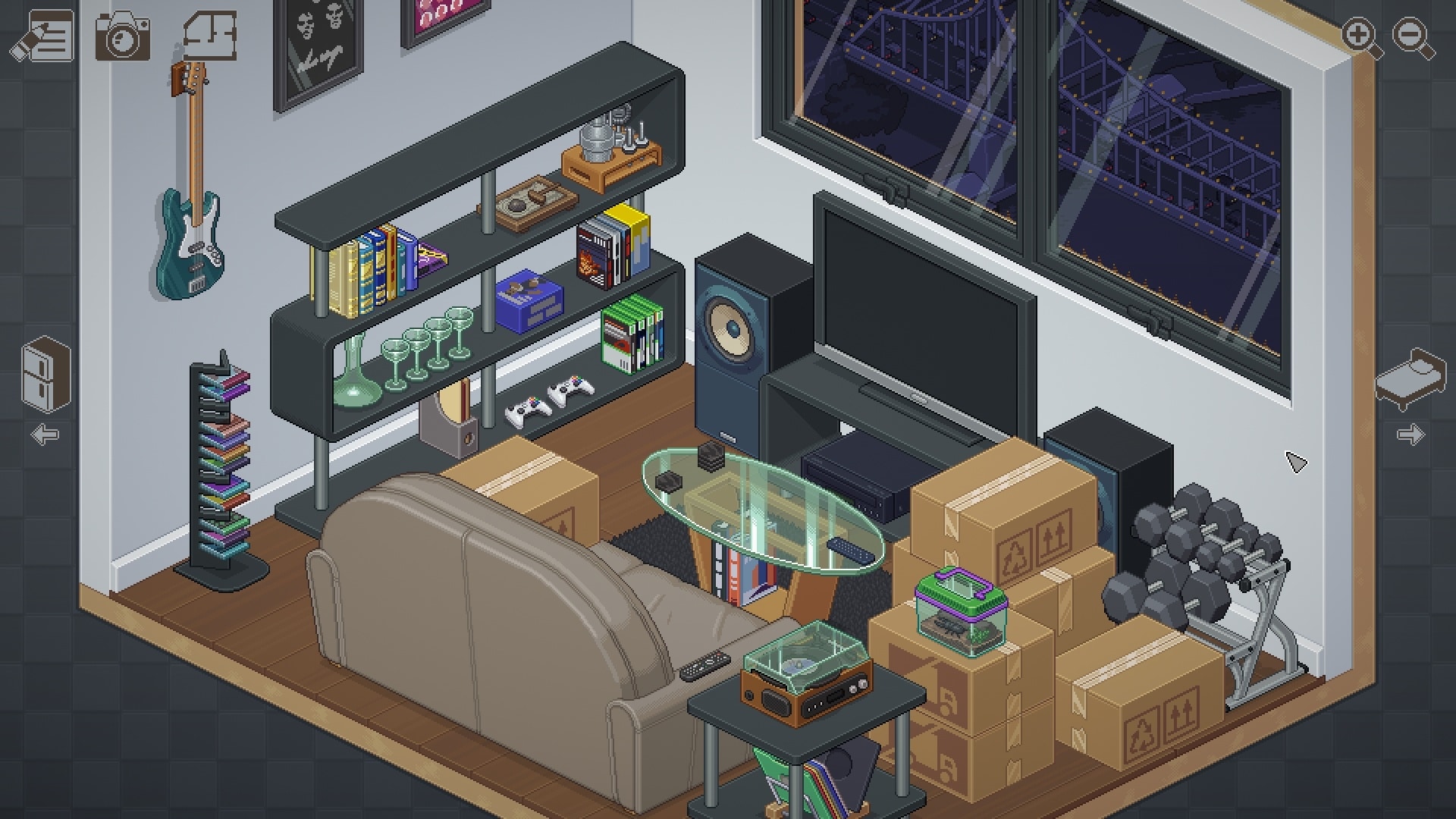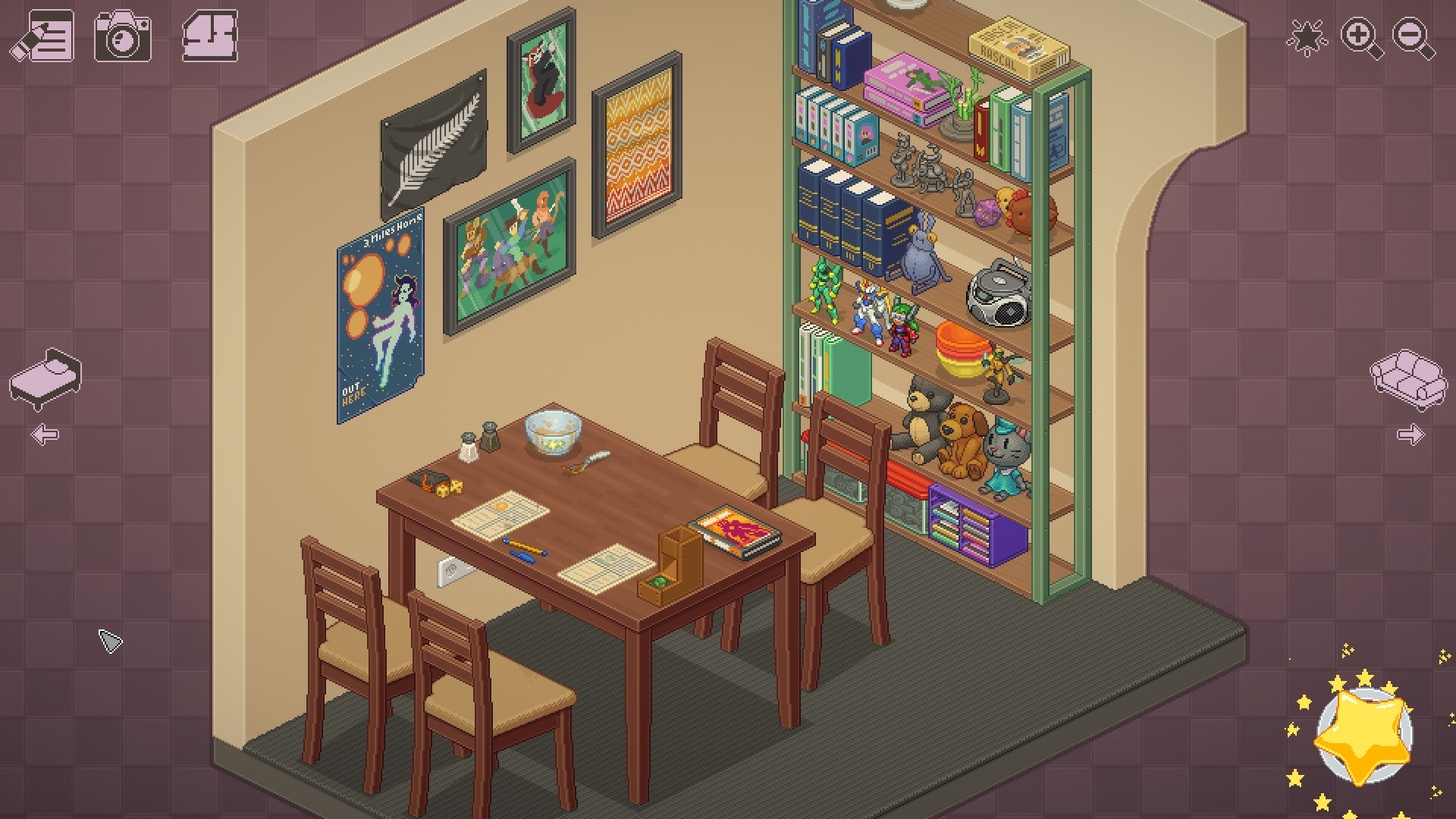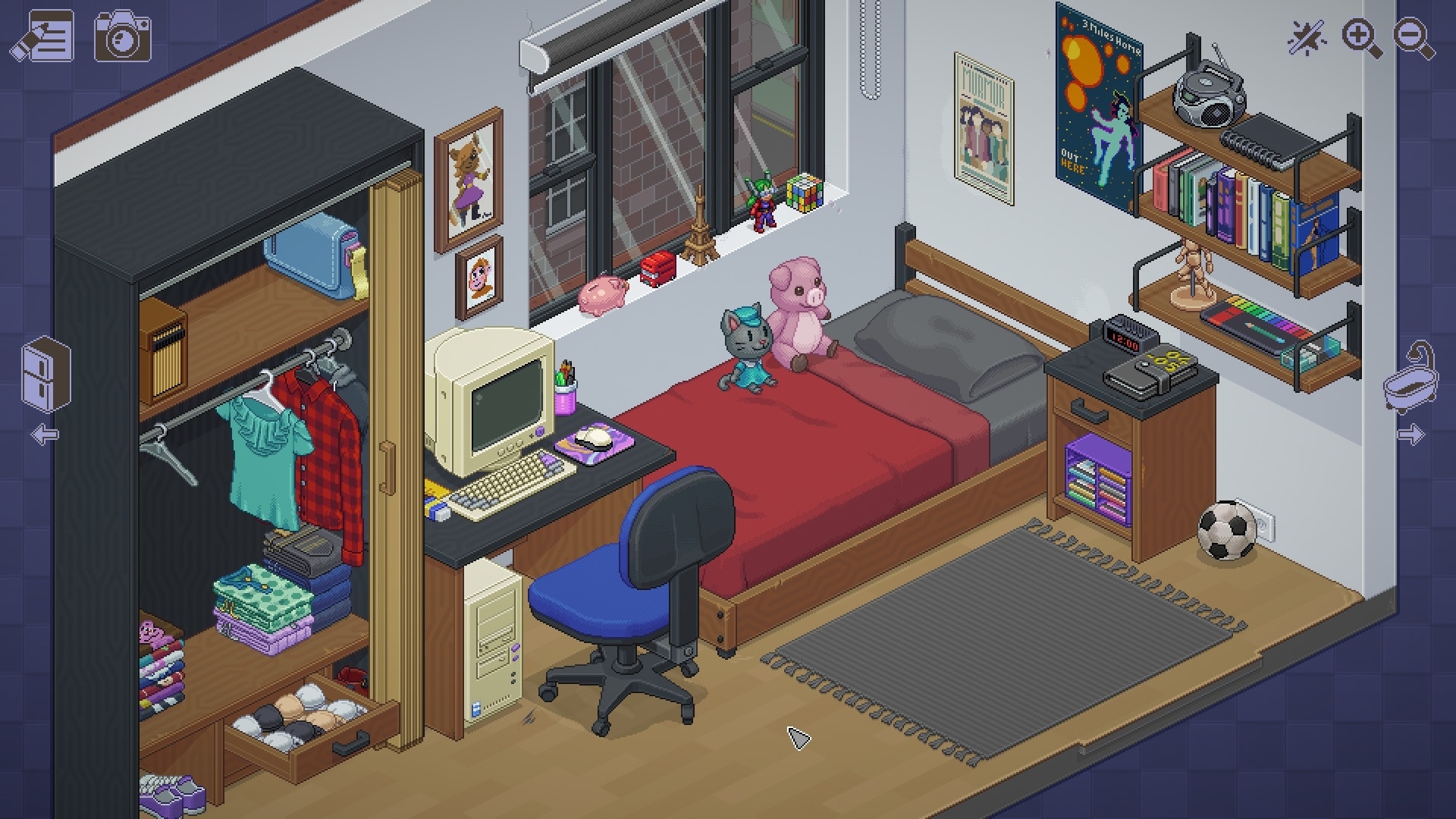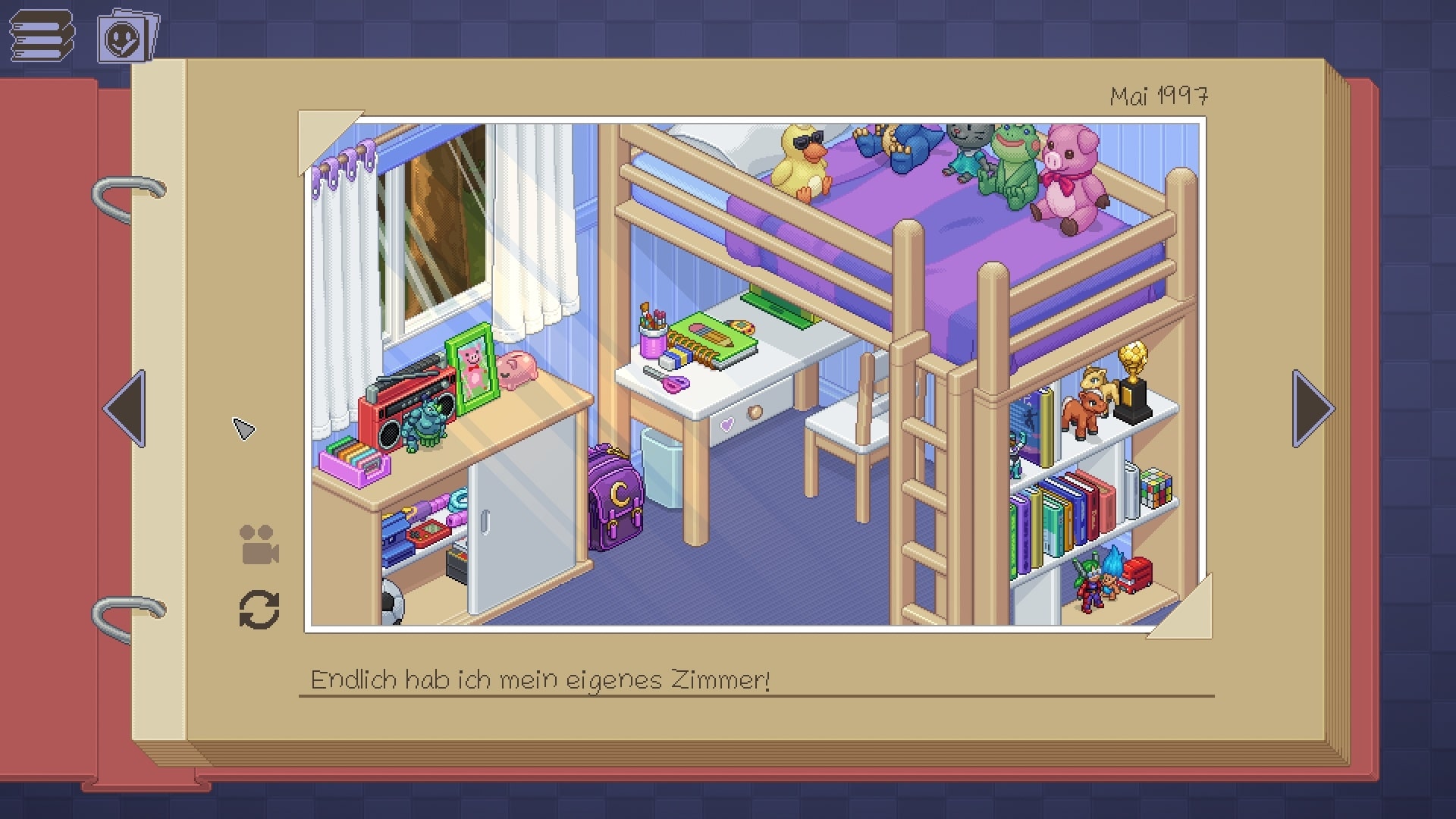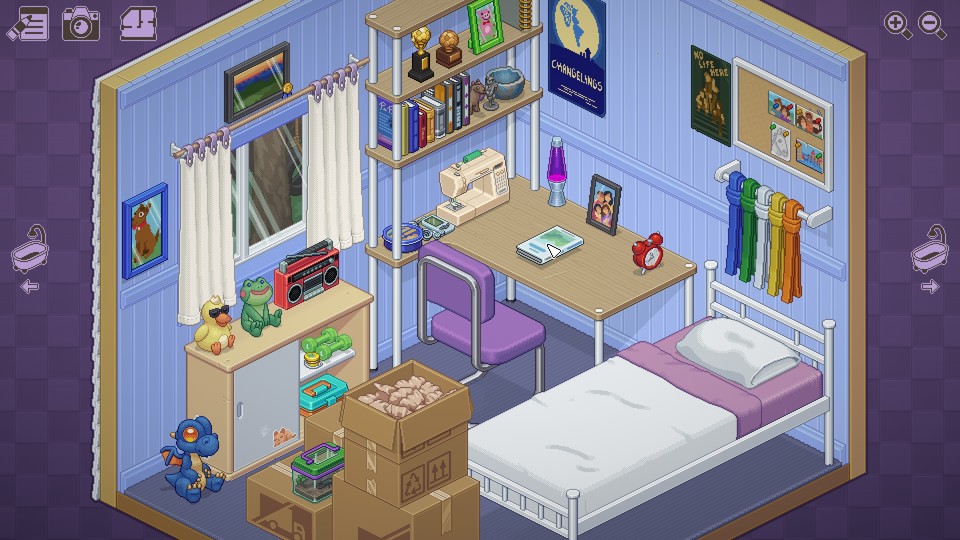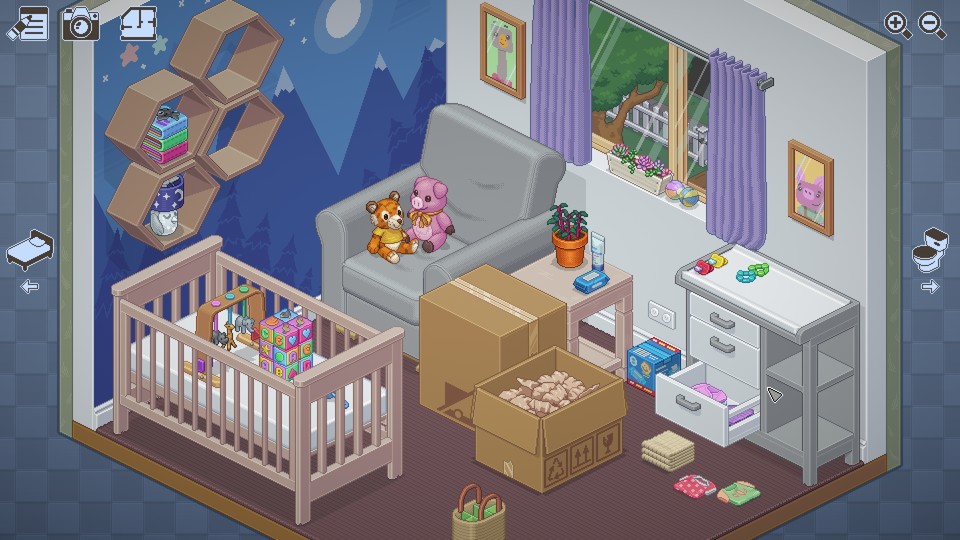Unpacking lets you unpack a lot of moving boxes. What you like to put off in real life is addictive on the PC.
They say moving three times is like burning down once: Things get lost, destroyed while packing, unpacking or in transit. I should know, as I have moved 18 times in my life, some times over distances of more than 500 kilometres. A little tip: buy e-books, they weigh nothing!
So it’s all the nicer that for this test of the indie puzzle game Unpacking I was only able to concentrate on the pleasant aspects of moving house and was spared the hassle of lugging boxes. Instead, I plunged into an isometric pixel world that is designed with a great deal of attention to detail, offers a pleasantly unobtrusive soundtrack and invites you to experiment again and again.
A life story in things
Unpacking serves my love for creative indie games in more ways than one: It’s incredibly relaxing to gradually unpack the contents of various moving boxes and figure out what belongs where. After a stressful day at work, I switch off my head surprisingly quickly when moving rolled-up socks, a pasta strainer or books into cupboards and shelves and lose myself in this soothingly simple task. First I set up a nursery for the unnamed protagonist, then she moves to college, moves into a shared flat with friends and finally with a partner for the first time. And so on.
With each new station in life, I rediscover old familiar things. The favourite stuffed animal is always with me, as is the laptop, an ole toothbrush mug and a slew of sketchbooks. New hobbies like pen&paper role-playing, playing the ukulele as well as more and more video games and DVDs reveal that the young woman’s interests are slowly expanding and are influenced by the different people she lives with.
Besides that, she seems to be a collector who likes to capture beautiful memories: She gradually adds other European landmarks to small figurines of the Leaning Tower of Pisa, a London double-decker bus and the Eiffel Tower. And a large chicken figure with chicks is joined by other differently shaped chickens in each parade.
I also follow her professional development in this way over several years of accumulating, increasingly professional work tools. An interest in drawing and painting turns into a purposeful artistic education with a degree, until she eventually even builds her career on it.
Removing and trying things out
Each new living environment forms its own level. Once all the boxes are unpacked, any items that are not in the right room or place are outlined in red: Cutlery should end up in kitchen drawers, a magnetic board on the wall and underwear in the wardrobe. With a bit of trial and error, there are additional small successes, some of them even across moves.
These end up as sticker symbols in an extra booklet that is used to track the progress of the game, for example, when I use fridge magnets to do an arithmetic problem on the fridge door. Once everything has been put away correctly, the completed stage of life is immortalised in a photo album, which can also be used to repeat a level.
While in college there is only a bedroom, a study, a tiny bathroom and a kitchenette to set up, in the last level I distribute the protagonist’s belongings over a two-storey house with its own children’s room, several bathrooms and a large kitchen. It gets particularly tricky when I have to move into an already furnished flat and there is already plenty of stuff in the boxes.
Here, too, the surroundings tell me some interesting details about the protagonist and the people she wants to live with: In the student flat-share, extra shelves have been cleared for her, at every corner it is noticeable that she is welcome in the cosy chaos and that they are making room for her.
When I moved into her partner’s very modern, functional and coolly furnished flat, on the other hand, it was clear to me at first glance that the whole thing was not under a good star and that a creative person would probably meet a rather straightforward manager type. I first have to painstakingly conquer space for her things everywhere, his interests predominate and take up a lot of space in the flat.
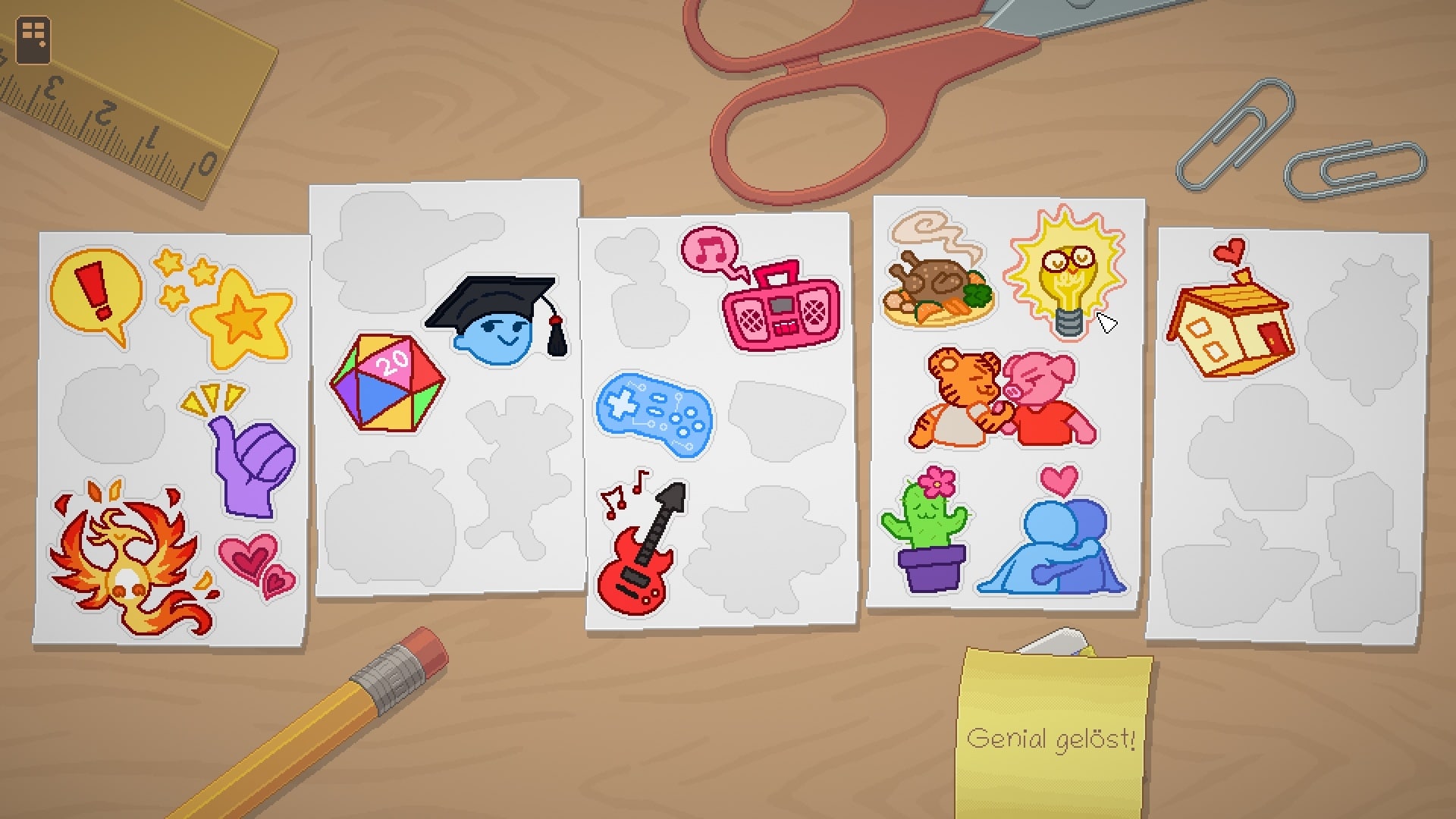
Even her diploma doesn’t fit on any wall, but eventually collects dust unseen under the bed. When she inevitably moves back into her parents’ house, one detail reveals how she feels about the end of the relationship: If I hang a couple’s photo of her and her ex on the noticeboard, the pin holding it lands right in his head!
Nostalgic feelings from the box
The further I progressed in the game, the more nostalgic my feelings became when I unboxed things I had known since the first stage of life. When new collectibles or new hobbies were added, I got a little excited each time and thought about what must have influenced the protagonist or what connected her to roommates and friends. One stroke of fate, which I only got through two items at all, made a particular impression on me.
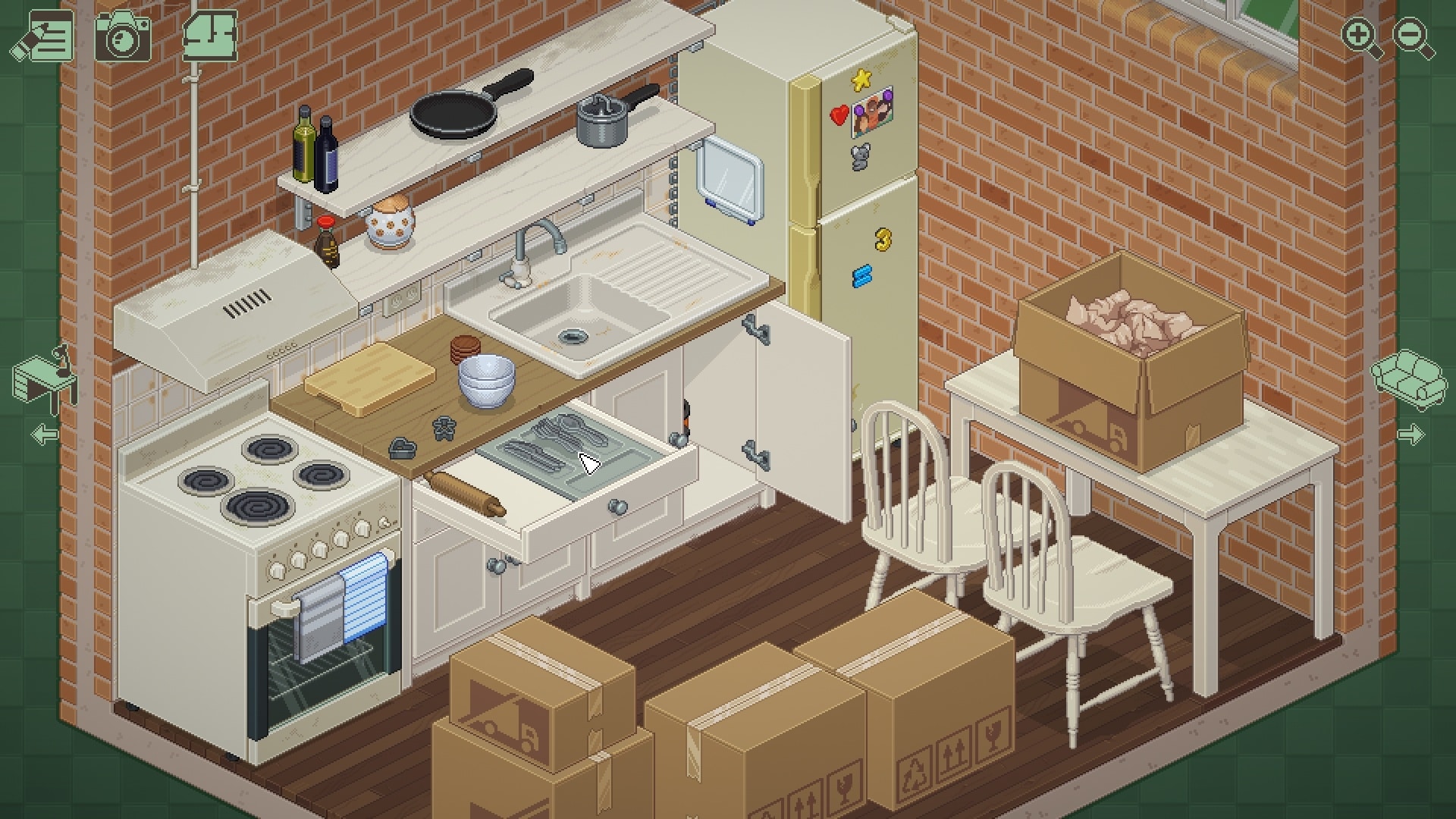
There aren’t many development teams that manage to create a whole story in my head with just two things, to make me curious about the next section. And it touched me deep inside when I gained the feeling at the last station of life that she has finally arrived at a person she can be happy with. There is so much more in Unpacking besides the puzzle approach, discovery and trial and error if you let yourself go with it. And even if I know all the flats now, I will certainly repeat levels one or two more times – because it is simply nice to dive into this small, not always perfect world for a few hours.
Editorial conclusion
Since I first played Unpacking as a demo at a Steam festival a few months ago, I was eagerly awaiting the full version. During the demo, you were only allowed to try out the first two levels, but even there, the addictive gameplay of unpacking and discovering was already apparent. The full version did not disappoint me: I would have liked to play twice as many levels with enthusiasm to learn even more about the protagonist and her life.
The scope is the only criticism I could make of Unpacking at the moment. Just under twenty euros for a playing time of about five to ten hours is debatable, especially if your money isn’t that loose. Alternatively, you can buy the Xbox Game Pass and save the extra money. If you like indie games and unusual mechanics, you should definitely give Unpacking a chance because of the lovingly designed, relaxing overall package.

